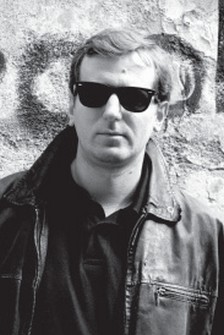
Vytautas Germanavičius (1969, Lithuania) – “Music is a space of hidden thoughts, senses, philosophy, and symbols that has to be revealed, opened up to the listener, and constantly re-discovered by listening”, asserts Vytautas Germanavičius. Perhaps for this reason the composer seeks new sounds and new techniques for producing them, affirming that each piece ought to have its own unique sound-space and sound-material.
Germanavičius in his early years studied accordion, classical and jazz piano. In 1996 he graduated from the Lithuanian Academy of Music with MA in composition under Professor Julius Juzeliūnas. In 2005 he received an MFA in electronic music from Mills College, USA. He was a recipient of the UNESCO-Aschberg Bursary for residence at the Banff Centre for the Arts (Canada), FULBRIGHT-Scholarship (USA), Sir William Glock Scholarship (UK), he received numerous grants from the Open Society Fund Lithuania to participate in multicultural projects in Ukraine, Moldova, Mongolia, and China.
Germanavičius’ music has been performed by prominent orchestras and ensembles, and in many international contemporary music festivals throughout Europe, North America and Asia. He has released three CD’s of his music – “Compositions for Lithuanian traditional instruments”, “Unknown Spaces”, and “Melting Constellations”.
Germanavičius currently holds the position of the Chairman of the Lithuanian Composers Union Music Foundation and Chairman of the International Society for Contemporary Music (ISCM) Lithuanian Section.
Cadenza for violin and accordion was composed in 2002. As the composer states, it is “a swarm of sounds, moving together in sequence with a single, sustained sound which gradually fluctuates assuming expressions through various timbres. Hence, it is a piece with many ‘cadences’.”
Chanson – “Chanson de geste, chanson courtoise, chanson parisien, chanson traditionnelle, chanson moderne…” This song or Chanson for violin, piano and accordion was composed in 2007. Here Germanavičius uses the technique of variations. While varying the musical motifs composer uses different textural models. Hereby the process turns into the single and continous melodic line.


